
Sungaya is a genus of stick insects which is endemic to the Philippine island of Luzon.
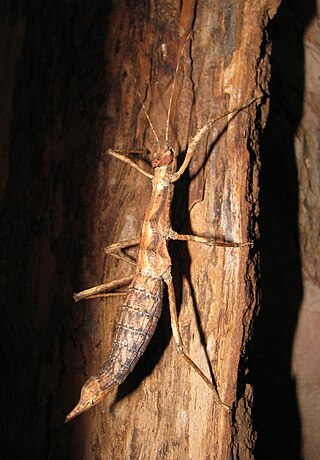
Sungaya inexpectata is a species of stick insects and the type species of genus Sungaya. The species name is derived from the Latin as "inexpectatus" and means "unexpected". Its common name is sunny stick insect, derived from the less commonly used sungay stick insect, which in turn refers to the place where the species was found.

Hoploclonia is the only genus of the tribe Hoplocloniini and brings together relatively small and darkly coloured Phasmatodea species.

The Obrimini are the most species-rich tribe of the Phasmatodea family of the Heteropterygidae native to Southeast Asia.
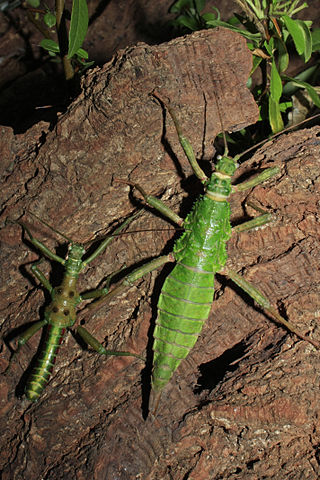
Mearnsiana bullosa, occasionally referred to by the common name Manobos stick-insect,is a species of stick insect in the family Heteropterygidae. It is native to the Philippine islands of Mindanao and Leyte. Until 2023 it was the only described representative of the genus Mearnsiana.

The genus Tisamenus native to the Philippines combines small to medium-sized species of stick insects.

Aretaon is a genus of stick insects native to Borneo and the Philippine island Palawan.
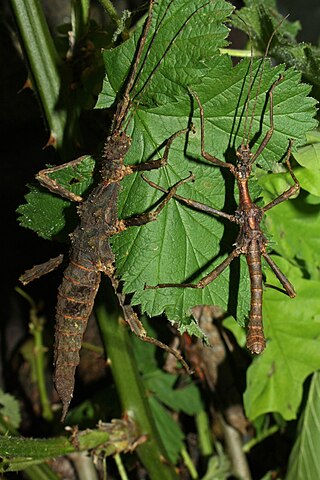
Trachyaretaon is a genus of stick insects native to the Philippines.

Brasidas is a genus of stick insects that is native to the Philippines and is named after the Spartan general Brasidas

Eubulides is a stick insect genus native to the Philippines.

Aretaon asperrimus is a species of insect in the Aretaon genus of the Phasmatodea order. The sometimes used common name thorny stick insect is a bit misleading, since the species does not correspond to the typical stick-like habitus and many other species are thorny as well.

Orestes krijnsi is a species of stick insects native to Vietnam.

Trachyaretaon carmelae is a species of stick insects. It is one of the largest in the subfamily Obriminae.
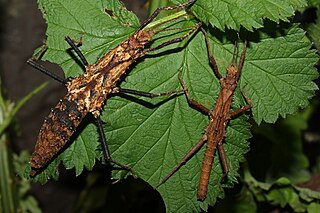
Tisamenus serratorius is a stick insect species that occurs on the Philippine island Luzon.

Brasidas samarensis is stick insect species from the family Heteropterygidae. Occasionally it is named Samar stick insect according to their origin. In addition is the type species of the genus Brasidas, which was named after the Spartan officer Brasidas.

Trachyaretaon echinatus is the type species of the genus Trachyaretaon in the order of the stick insects.

Brasidas cavernosus is a representative of the stick insects native to the Philippine island Luzon. It is considered one of the largest species in the subfamily Obriminae.

Tisamenus hebardi is a stick insect species (Phasmatodea), in the family of the Heteropterygidae endemic to the north of the Philippine island of Luzon.

Trachyaretaon negrosanon is a stick insect species from the family Heteropterygidae native to Negros.
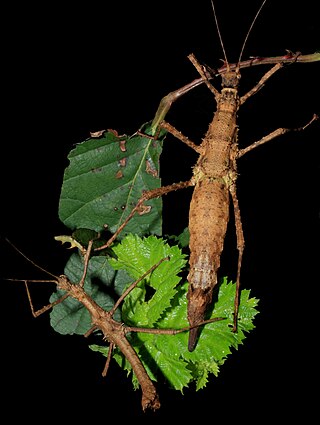
Brasidas lacerta is a species of stick insect in the family Heteropterygidae which is endemic to Mindanao. Due to its extreme variability, and the nymphs being spinier than to the adults, the species has been described under other names, resulting in a total of seven synonyms.























